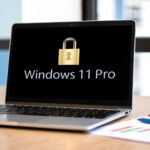Australia
The Hidden Dangers of Counterfeit Software
The use of unlicensed software is surprisingly common, but its consequences can be severe. According to BSA | The Software Alliance, using unlicensed software exposes organizations to significant security threats, turning a perceived bargain into a costly liability. The initial appeal of a heavily discounted key quickly fades when you consider the hidden risks.
The most immediate danger lies in security vulnerabilities. Counterfeit keys are frequently bundled with malware, ransomware, or spyware. We can all picture that sinking feeling when a system slows down or behaves erratically. A fake software key can be the entry point for criminals to access your personal data, financial information, or entire business network, leading to devastating data breaches and identity theft.
Beyond security, there are significant performance and functional risks. Counterfeit software is cut off from the developer’s ecosystem. This means no official updates, no security patches, and no technical support. Your system can become unstable, suffer from frequent crashes, and develop compatibility issues with other programs. This constant disruption chips away at productivity, turning a simple task into a frustrating ordeal.
Finally, the legal and financial consequences are substantial. Using unauthorized software is a direct violation of copyright law. As organizations like BSA | The Software Alliance emphasize, this can lead to considerable fines and legal action, especially for businesses. Moreover, there’s the simple financial loss. Software publishers regularly deactivate fraudulent keys, leaving you with non-functional software and no recourse for a refund. The small amount saved on a cheap key is insignificant compared to the potential costs of system damage, data loss, and legal penalties. Investing in secure software keys from the start is the only way to protect your digital environment.
How to Identify a Trustworthy Software Vendor
Before you even think about the software key itself, the first step is to evaluate the seller. A trustworthy vendor operates with transparency, while a shady one leaves a trail of red flags. Knowing what to look for is essential for making safe online software purchases.
Start by investigating the vendor’s reputation and reviews. Don’t just rely on the glowing testimonials on their own website. Search for independent reviews on platforms like Trustpilot or in specialized tech forums. These unfiltered experiences from other customers provide a much clearer picture of the seller’s reliability and customer service quality.
Next, analyze the pricing. We all love a good deal, but some discounts are too good to be true. Authorized resellers can offer competitive prices, but a key advertised at 80% or 90% below the retail price is a major warning sign. This often indicates the key is from a gray market source or is outright fraudulent. Think of it as a risk assessment: is the massive discount worth the potential for deactivation and security breaches?
A vendor’s digital storefront also tells a story. Check for basic website and payment security. The site should use HTTPS encryption, indicated by the padlock icon in your browser’s address bar. Legitimate businesses use trusted payment processors like Stripe or PayPal and provide professional invoices. A trustworthy vendor will also have a clear mission and company history, which you can learn more about on our company profile page.
| Characteristic | Trustworthy Vendor (Green Flag) | Untrustworthy Vendor (Red Flag) |
|---|---|---|
| Pricing | Realistic discounts (e.g., 10-40% off retail) | Extremely low prices (e.g., 90% off) |
| Website Security | HTTPS enabled; professional design | No HTTPS; broken links, typos |
| Customer Reviews | Positive feedback on independent sites (Trustpilot, etc.) | Only perfect reviews on their own site, or no reviews |
| Contact Information | Physical address, phone number, and support email are visible | Anonymous or only uses a simple contact form |
| Payment Options | Reputable gateways (PayPal, Stripe, Credit Cards) | Only accepts cryptocurrency or direct bank transfers |
Note: This table provides general indicators. A combination of red flags, rather than a single one, should be cause for concern.
Methods for Verifying a Software Key’s Authenticity
Once you’ve identified a seemingly trustworthy vendor, the focus shifts to the product itself. Verifying you have authentic software keys involves a few practical steps you can take just before and immediately after your purchase. These actions provide the final confirmation of legitimacy.
- Pre-Purchase Inquiry: Before committing, contact the seller with specific questions. Ask about the key’s origin. Is it a Retail, OEM, or Volume License key? What are its activation limits? A legitimate seller should provide clear, direct answers without hesitation. Vague or evasive responses are a clear warning sign.
- Official Download and Activation: This is the most critical step. Always download the software directly from the official publisher’s website, such as Microsoft’s official page for Windows. Never use a download link provided by the seller. The ultimate test for genuine software licenses is whether the key activates successfully on the publisher’s servers. If it does, you have a strong indicator of its authenticity.
- Use Official Validation Tools: Many major software publishers offer online tools to validate a license after installation. For example, Microsoft provides resources to check if your Windows installation is genuine. Using these tools gives you a definitive confirmation that goes beyond the initial activation.
- Understand License Type Nuances: It’s important to recognize the gray area of resold OEM keys. While these keys might activate initially, their use on a different machine can violate the publisher’s terms of service. This could lead to deactivation down the road. For example, when purchasing a key for an operating system like one of our Windows 11 Pro licenses, understanding if it’s a retail or OEM version helps you make a fully informed decision.
The Role of Verified Marketplaces and New Technology
The digital marketplace is constantly adapting to improve security and combat fraud. Understanding the ecosystem can help you find reliable sources for verified software keys and stay ahead of potential risks. The good news is that technology and trusted platforms are making it easier to purchase with confidence.
One of the safest approaches is to use established marketplaces that actively vet their sellers and offer buyer protection. These platforms function as a safety net, providing a clear process for recourse if a key turns out to be faulty or fraudulent. This added layer of accountability discourages dishonest sellers.
An even more secure option is the direct-to-consumer model, where digital distributors source keys directly from publishers or their authorized partners. This approach guarantees authenticity and provides instant, secure delivery straight to your inbox. This model is common for a wide range of products, from operating systems to specialized tools like those in our design and development collection.
Looking ahead, emerging technologies promise to make software licensing even more secure. Blockchain, for instance, is being explored for its potential to create an unchangeable and transparent record of software ownership. As noted in publications like the Harvard Business Review, this technology is already being tested in various industries for supply chain and license management, which could make counterfeiting nearly impossible. While these solutions are still developing, they point toward a more secure future. However, even with these advancements, your own diligence remains the most critical defense against cybercriminals.
Your Checklist for a Secure Purchase
Navigating the world of online software purchases can feel complex, but a systematic approach makes it manageable. This checklist summarizes the key actions to ensure you receive a genuine product and protect yourself from fraud. Use it as a guide for all your future safe online software purchases.
- Vet the Vendor: Before you buy, research the seller’s reputation. Look for independent reviews and confirm their website is professional, secure, and provides clear contact information.
- Scrutinize the Price: Compare the offered price against the official retail value. Be highly skeptical of discounts that seem too large to be legitimate.
- Ensure Secure Checkout: Always verify the website uses HTTPS. Opt for secure payment methods like credit cards or PayPal, which offer buyer protection in case of a dispute.
- Download from the Official Source: Never use download links provided by the seller. Go directly to the software publisher’s official website to download your software.
- Activate and Validate Immediately: Enter your new key as soon as you receive it to confirm it works. If the publisher offers validation tools, use them for an extra layer of confirmation.
- Keep Records: Save your digital receipt, the software key, and any email communications with the seller. This documentation is essential if you need to resolve a dispute later.
By following these steps, you can confidently purchase the software you need without falling victim to common scams. For complete peace of mind, consider working with trusted digital solution providers like Digital Hub Key that prioritize security and authenticity.







